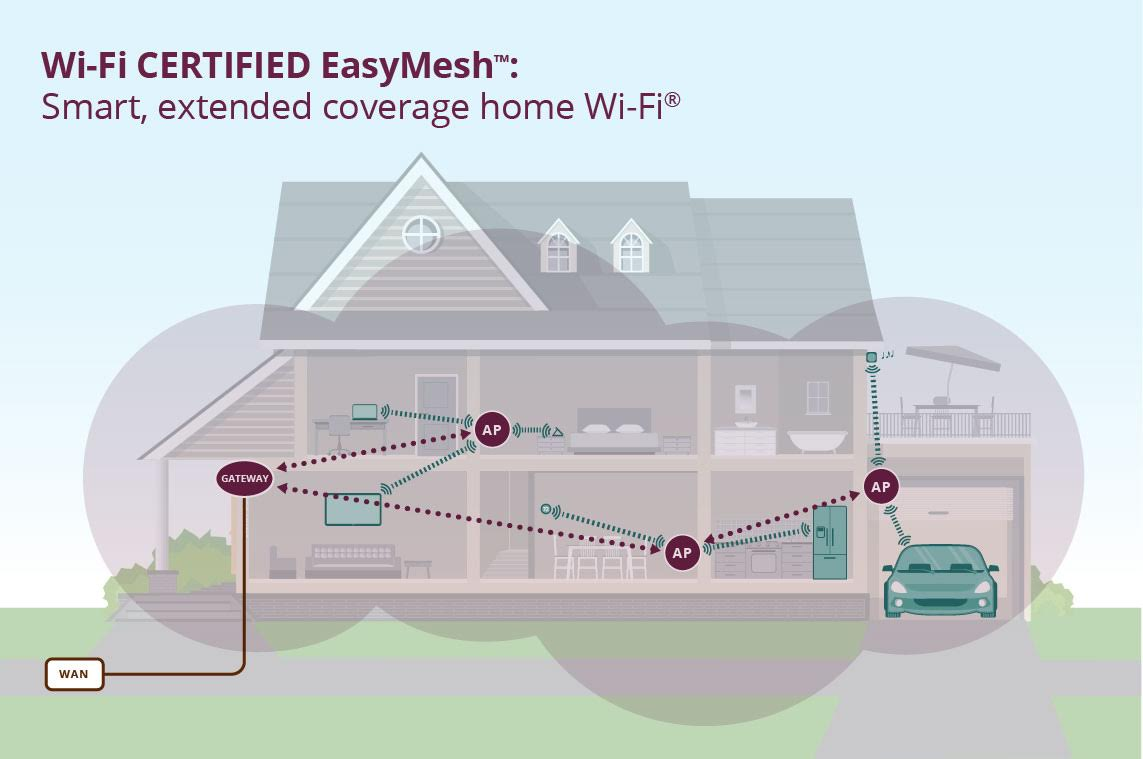By Aalyia Shaukat, contributing writer
The Wi-Fi Alliance has officially introduced Wi-Fi CERTIFIED EasyMesh, a platform that allows for interoperability of various access points (APs) from different vendors. Based on the Wi-Fi CERTIFIED industry-agreed standards for interoperability and security, Wi-Fi EasyMesh is meant to overcome the compatibility issues that come with leveraging APs with different security profiles to provide high-quality seamless Wi-Fi connectivity. This, in turn, encourages consumers to extend their network coverage from one AP to many without the hassle of difficult vendor-specific configurations.

Why use access points?
Traditionally, consumers would have to very creatively route Ethernet cable through an entire house just to get decent internet speeds in certain areas where the wireless link was too weak. Still, this hardwired solution was nowhere near modular because only a limited number of devices could be connected at a time. Now, the average home has seven wirelessly connected devices — few of which have an Ethernet port readily accessible — so routing Ethernet cables through an entire home/building for individual devices is not as feasible. Access points have been a valuable tool in solving some of these issues by effectively extending a Wi-Fi network through a hardwired (Ethernet) link into the local area network (LAN) to provide uniform coverage of an entire location.
Previous drawbacks of using multiple APs
This does come with its limitations because APs can handle only a limited amount of traffic per radio, and in areas with a high density of APs, interference can occur with overlapping of the three available channels in the 2.4-GHz band (channels 1, 6, and 11). Moreover, equipping an area with APs from different vendors can get messy quickly with compatibility issues — if a user is moving in a building, they will often encounter a loss of signal due to the various service set identifiers (SSIDs) and subsequent security configurations.
To support a phone call while roaming, for instance, two (or more) different APs would have to seamlessly communicate with each other to allow clients actively leveraging VoIP to access the AP’s Call Admission Control (CAC) while other idle traffic would connect to another underused AP with a weaker signal. The compatibility issues can impede progress and upgrades to a LAN. A customer would not be able to shop for hardware outside of the vendor that they are already using without having to take the time to configure all of the APs.
Wi-Fi EasyMesh
Access points that are Wi-Fi EasyMesh-certified can organize themselves and establish a high-integrity wireless link with minimal effort. Some features of Wi-Fi EasyMesh include the following:
● Monitors network conditions and self-adapts as needed
● Guides smartphones, tablets, and other user devices when roaming to the optimal AP for a seamless user experience even with delay-sensitive traffic
● Modular standards-based approach makes it simpler to introduce new APs to their network
● Can be leveraged with Wi-Fi Certified Home Design for uniform home coverage
The Wi-Fi Alliance took a standards-based approach with the EasyMesh software platform so that networks comprised of multiple APs from various vendors could be configured with uniform coverage in a residence or commercial building.
Advertisement
Learn more about Electronic Products Magazine





